Choosing Acrylic Bath Cleaners: A Comparative Review
The new acrylic bathtub looks flawless. Unusual design, glossy surface and perfect smoothness. In order for the bowl to maintain gloss for as long as possible, it is necessary to adhere to the basic norms of operation and follow the recommendations for care.
The primary task is the competent choice of means for cleaning acrylic bathtubs, taking into account the technical and design features of polymer plumbing. We will tell you how to choose a composition. We will show you in which cases to use it and how to care for a bowl that is “sensitive” to mechanical and chemical effects.
The content of the article:
What is capricious acrylic afraid of?
Popularity acrylic bathtubs due to their excellent appearance, a variety of shapes and colors, smooth surface, low thermal conductivity and affordable cost. However, polymer plumbing, unlike metal products, has a couple of significant drawbacks: exposure to mechanical stress and painstaking maintenance.
Maintenance of the acrylic bath should be carried out without any abrasive products. The use of metal brushes, washcloths and hard brushes is excluded. If the banal rules of care are not observed, the appearance of a network of micro-scratches is ensured, as well as "combing" of the upper glossy layer.
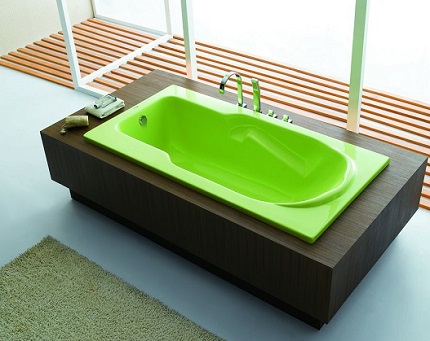
Detergents also have a number of limitations.
The composition of household chemicals should not be present:
- Fine-grained components. Powders, including dry soda, contribute to the appearance of micro-scratches - the shiny surface dims and becomes dull.
- Chlorine. The substance corrodes the polymer - the structure becomes porous, the surface becomes rough.
- Solvents. The regular use of acetone, oxalic acid, white alcohol leads to partial dissolution and deformation of the upper layer. As a result, the bowl loses its former attractiveness.
Ammonia and formaldehydes have a similar effect with acetone. With prolonged contact with chemicals, acrylic begins to deform.
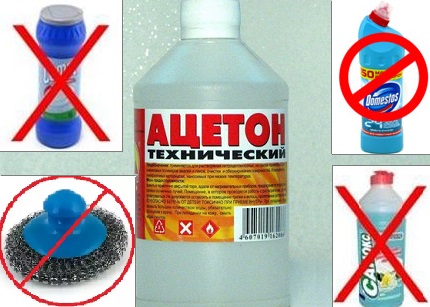
Arsenal of cleaning products and technologies
The basic requirement for caring for the bowl is quite standard - remove any impurities that appear on time. To keep the bowl in good condition, improvised or universal means of purchase are suitable. To rid the surface of old stains and “reanimate” the bath, you will have to try and spend several cleaning cycles.
Folk Methods - Light Artillery
Relatively recent pollution can be removed with improvised means.
Verified folk recipes for gentle action include:
- lemon acid;
- Toothpaste;
- baking soda;
- vinegar and salt;
- hydrogen peroxide.
Lemon. Acid helps in the fight against rusty drips and helps preserve the whiteness of the bathroom.
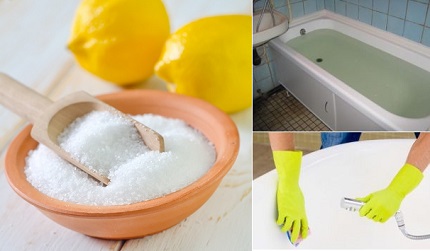
Following actions:
- Fill the bathtub with water 40-50 ° C to the overflow hole.
- Add lemon solution and mix.
- Leave to “acidify” for 2 hours - salt deposits soften during this time.
- Drain the solution and rinse with water.
- Dry the surface with a soft cloth.
Old deposits are removed by a more “cool” emulsion. The cleaning composition is prepared at the rate of 50 g of lemon on 2 liters of water. Affected areas should be treated with a solution, leave for 20 minutes. Evaluate the result and repeat the procedure, if necessary.
Lemon cleansing must not be abused. In order not to damage the enamel, it is recommended that the procedure be performed no more than twice a year.
Toothpaste. The method is expensive, but it is quite useful for express cleaning of yellow plaque. White paste or powder is suitable for the procedure. The dry composition must be diluted with water to a thick sour cream.
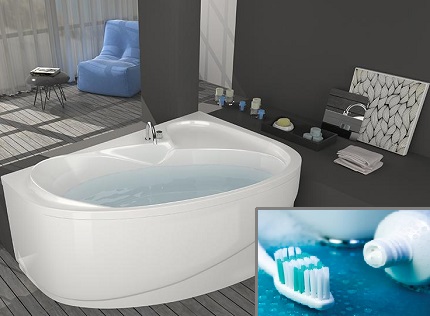
If the desired effect is not achieved the first time, the procedure should be repeated, increasing the waiting time to 40-60 minutes.
Baking soda. To maintain the whiteness of the bath will help sodium bicarbonate - soda. When dry, the cleaning powder is not used, as it can damage the coating. Soda is pre-diluted with a small amount of water.
The prepared slurry processes the “affected” areas of acrylic. You can not rub soda into the surface, just leave the solution for half an hour, and then rinse with water. Based on baking soda, you can make a cleaning cream for the gentle care of acrylic plumbing.
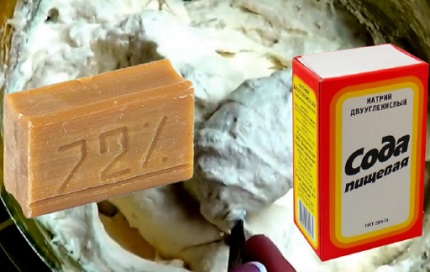
Cooking Technology:
- Rub the bar of soap, pour hot water (60 ° C), “insist” the solution for a couple of hours.
- Add soda and a few drops of aromatic oil to the soap mixture.
Store the finished product in a plastic or glass container. Method of using home-made “cream”: soak a soft sponge with a composition, wipe the acrylic coating. After half an hour, rinse and wipe dry. The result of the treatment is a clean bathtub and filling the room with a pleasant aroma.
Vinegar and salt. In the struggle for purity, acetic acid showed itself perfectly - it removes yellowness from the bottom and walls of the bowl.
There are two possible applications:
- Local cleaning. Dilute apple cider vinegar (20 g) with water (200 g). Moisten the problem area with acetic solution and rinse with a stream of water after 10 minutes. The procedure should be performed with rubber gloves.
- Full update. Fill the bowl with warm water, pour 1.5 l of weakly concentrated acetic acid into the bath and leave overnight. Drain the solution, wipe the walls and bottom with a soft sponge. Treat unreached bath sides using the “local cleaning” method.
Slight rust contamination can be salted. Salt crystals are a hard abrasive, so you need to be extremely careful. For work, it is better to use finely ground salt.
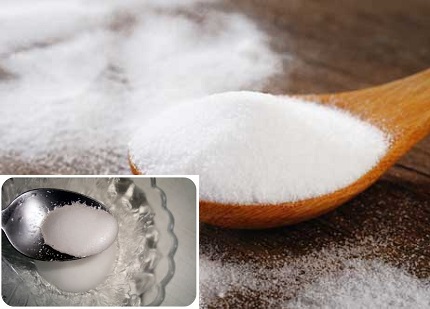
Hydrogen peroxide. A more radical method is the use of hydrogen peroxide and ammonia. In a glass container, 100 ml of ammonium hydroxide and 50 ml of peroxide should be combined. Using a cotton pad or sponge, apply the solution to dirt, hold for 10 minutes.
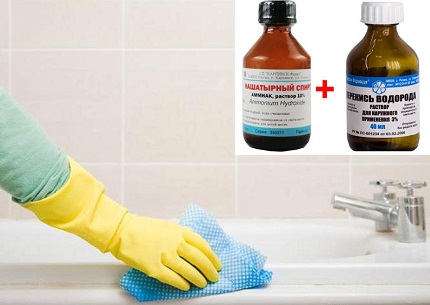
Household chemicals in the fight for cleanliness
This group of drugs is universal cleaning products and maintaining the attractiveness of acrylic bathtubs, designed for regular use.
Names of popular items for the care of polymer plumbing:
- Ravak Cleaner (Czech Republic);
- San Klin (Ukraine);
- Bagi Acrilan (Israel);
- Frosch "Green Grapes" (Germany);
- Bas "Tim-Profi" (Russia).
Ravak Cleaner. The manufacturer of sanitary ware has introduced its own line of products for acrylic surfaces.

Cleaner cleans and polishes the acrylic coating. To remove old contaminants, the liquid must be sprayed over the bowl of the bath and left to act for 10 minutes. After - rinse with water.
SunClean. Despite the relatively low cost, the tool has an extensive spectrum of action. The liquid emulsion copes with traces of calcium soap and rust without damaging the capricious coating of the bath. The composition does not contain phosphates, acids or abrasives.
SunClean is suitable for cleaning jacuzzis, showers, glass and mirror surfaces.
Bagi Acrylan. The drug has won many positive user reviews. Cleaning foam is effective in combating fungus, limescale, soap residue, mold and rust.
The composition of Acrylan is a surfactant in tandem with citric acid. Such a symbiosis of components explains the cleansing and disinfecting qualities of the drug. After processing, a protective film layer remains on the bowl, which reduces the accumulation of dirt.
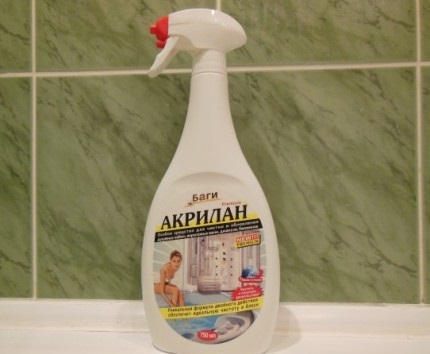
The main advantages of Acrylic:
- high efficiency;
- ease of use;
- quick action - it is necessary to distribute in the bath and rinse;
- universality - applicable for various coatings.
The disadvantages of the drug include high cost and toxicity. Cleaning must be carried out with the hood turned on, as Acrylan has a pronounced smell of chemicals.
Frosch Green Grapes. The drug is made from biodegradable components. The basis of the composition: tensides and grape acid. Frosch is the best choice for allergy sufferers and green food enthusiasts.
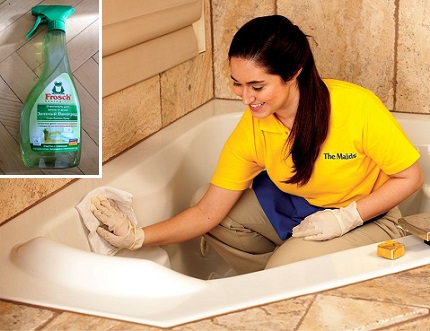
Bas "Tim-Profi." Environmentally friendly cleaning "mousse" of Russian production.Suitable for comprehensive plumbing care: processing acrylic, plastic, stainless and chrome surfaces. The solution penetrates the contamination structure, destroying particles of salt deposits and removing an unpleasant odor.
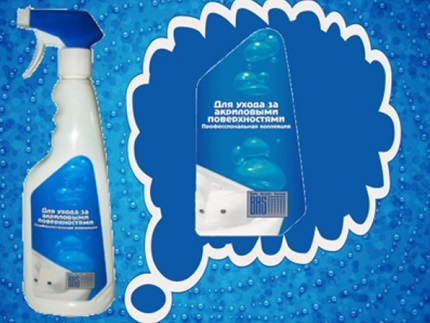
Water stone and rust removal
With the “neglected” state of the bath, universal preparations may be powerless.
To return to its former whiteness and shine, specialized tools will help:
- Triton Acril cleaner (Russia);
- Sanoks “Pure Bath” (Russia);
- Astonish Cleaning Paste (UK).
Triton Acril cleaner. The tool can be classified as universal drugs with a pronounced cleansing effect. Acril cleaner does a good job with greasy, calcareous plaque, rust spots and water stone.
The main active ingredients: cationic and neon surfactants, antiseptic, organic acids and flavoring.
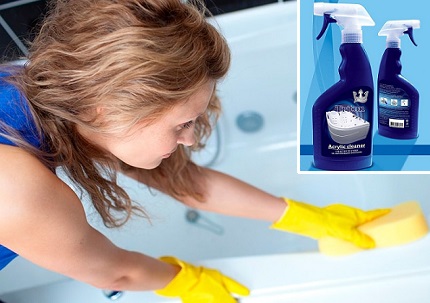
Sanoks “Clean Bath”. An inexpensive tool from the category of "Green Technologies" with a whitening effect. The composition includes surfactants, complexing agents, flavorings and glycerin. The absence of acids makes the product safe for acrylic coatings.
With a “gentle” filling, Sanox is effective against most of the dirt in the bathroom, including potassium permanganate and rust. The drug is applicable for cleaning any plumbing and tiles - it gives gloss to surfaces.
The main advantages: affordable cost, efficiency, safety. Cons: a rather pungent odor and uneconomical consumption due to the liquid consistency. To get a good result, the product must be kept for about 30-45 minutes.
Pasta "Astonish". Despite the fact that the main purpose of the product is to care for kitchen surfaces, the paste is often used to clean acrylic bathtubs.
Astonish acts carefully and efficiently. The composition contains soap, soft abrasives, orange extract. The product is manufactured using innovative technologies and meets stringent European quality standards.
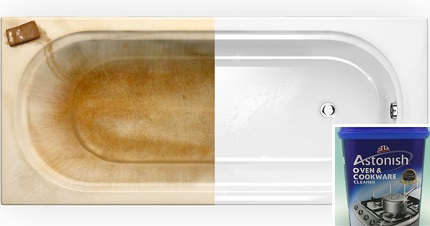
Whitening products
Cif Ultra White (Hungary) is considered to be the leader among “soft” preparations with a whiteness effect, in second place, according to consumers, is Mr. Cister (Russia).
Cif Ultra White. The smallest micro-granules are introduced into the cream - whitening components that enhance the action of cleaning substances and ensure snow-white acrylic.
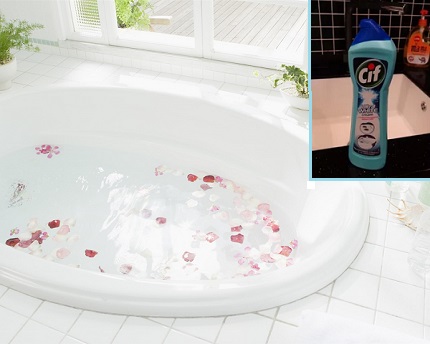
Contraindications for use: wallpaper, wooden surfaces, textiles, galvanized metal, vinyl, linoleum and aluminum.
Mr. Chister. The product effectively removes the yellowness of the bath bowl. In addition, Mr. Chister perfectly copes with rusty areas, fat deposits on polymer surfaces and has an antifungal effect. Additional advantages: low cost and saturation of the bath with shine.
Bath disinfectants
Every bath should be “disinfected” once a year; hydromassage systems are cleaned every month. The procedure is aimed at the destruction of fungal spores, mold and pathogens. Specialized tools will cope with this task: Ravak Desinfectant and Triton Desinfectant.
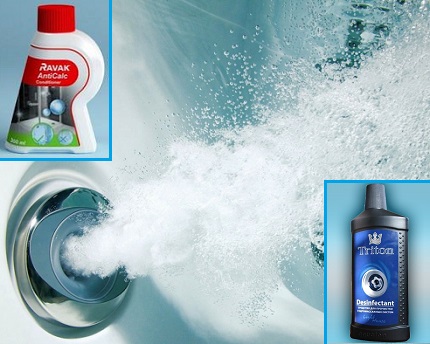
Highly concentrated emulsions, depending on the purpose of use, require dilution with water - the ratio of cleaning agent to water is indicated in the manufacturer's instructions.
The nuances of cleaning a bowl with a hydromassage
Systems with a hydraulic massage function are equipped with nozzles connected to a compressor and a circulation pump. The technique creates excess pressure of the water stream, which, under pressure, exits through the nozzles in hot tub.
With regular use, the hydromassage options of the nozzle do not have time to dry out - constant humidity provokes the multiplication of microorganisms, the growth of mold and the accumulation of lime deposits.
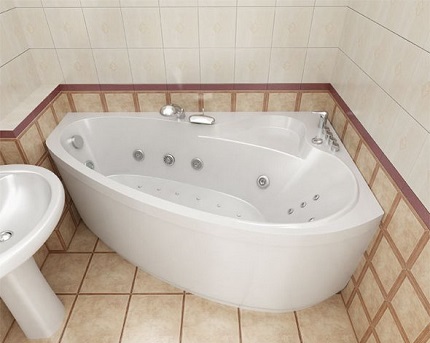
The procedure for the disinfecting procedure:
- Fill the tank with water so that the nozzles "go" under the water by 5-7 cm.
- Pour the cleaning concentrate into the bathtub and turn on the hydromassage for 20 minutes - the liquid must complete several circular cycles in the system.
- Drain and refill the bowl.
- Turn sprayers on for 5 minutes and empty the bath.
Upon completion of the procedure, it is necessary to perform standard cleaning of the walls and the bottom of the "font".
Prevention of pollution
Compliance with elementary rules for using an acrylic bathtub will save you from unnecessary costs, facilitate the care of plumbing, prolonging its service.
№1. Do not soak laundry. The components of washing powders are not always comparable with the polymer coating. In addition, if bright clothes shed, then the bath has every chance to “absorb” the paint. This property of acrylic must be taken into account when washing your hair after a “fresh” painting.
№2. Taboo for swimming animals.
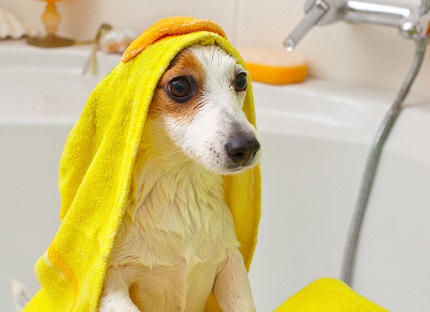
№3. Respectful attitude. Do not put heavy objects, metal cans, etc. in a plastic tank. They can deform acrylic and leave dents and scratches.
№4. Regular care The best prevention of the formation of tubular stains is cleaning the bath after each bath. Rinse the bowl with warm water, remove the drops with a cloth.
If it is already impossible to tidy up the surface of polymer plumbing, it’s better to buy install a new acrylic bath or carry out repairs using acrylic liner. We recommend that you read the articles we recommend.
Conclusions and useful video on the topic
The video compares the effectiveness of folk cleaning methods (toothpaste and soda-soap solution) with household chemicals:
To preserve the impeccable cleanliness and whiteness of acrylic plumbing, there are many existing tools. At-hand preparations do not always cope with the task, so it is better to use specialized household chemicals, created taking into account the characteristics of acrylic plumbing.
Tell us about what tools and methods you use in caring for acrylic plumbing. Share information on this issue that is useful to site visitors. Please write comments in the block below, post pictures, ask questions.

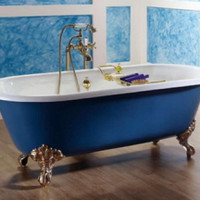 Acrylic or cast-iron bath - which is better? Comparative review
Acrylic or cast-iron bath - which is better? Comparative review 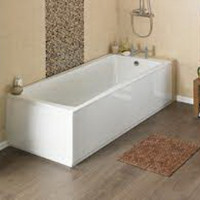 Which bath is better - acrylic or steel? Comparative review
Which bath is better - acrylic or steel? Comparative review 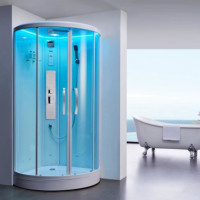 Bath or shower - which is better? Comparative review
Bath or shower - which is better? Comparative review 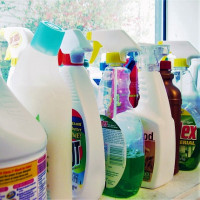 Best Bath Cleaner: Top-Rated Practical Plumbing Cleaners
Best Bath Cleaner: Top-Rated Practical Plumbing Cleaners 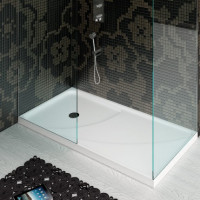 Shower trays: a comparative overview of different types and designs
Shower trays: a comparative overview of different types and designs 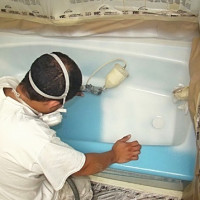 How to paint a cast-iron bath: common tools and technologies
How to paint a cast-iron bath: common tools and technologies  How much does it cost to connect gas to a private house: the price of organizing gas supply
How much does it cost to connect gas to a private house: the price of organizing gas supply  The best washing machines with dryer: model rating and customer tips
The best washing machines with dryer: model rating and customer tips  What is the color temperature of light and the nuances of choosing the temperature of the lamps to suit your needs
What is the color temperature of light and the nuances of choosing the temperature of the lamps to suit your needs  Replacement of a geyser in an apartment: replacement paperwork + basic norms and requirements
Replacement of a geyser in an apartment: replacement paperwork + basic norms and requirements
Acrylic bathtubs are very demanding to care for, I know this from my point of view. They are easily scratched, and then become unpresentable. If the cast-iron bath is not killed for 15 years, then this will not work with acrylic. Therefore, it is worth cleaning them only with gels, you can not use abrasive products. And the brush for washing should also be special. Lemon is a great help, it eats away plaque, and if there is, then spots. I also like Frosch, but it's not so easy to find. In general, any product that is written for acrylic baths will do, but only by trial and error can you choose what the hostess will like.
In no case should you wash the acrylic bath with compounds that contain: gasoline, solvent, acetone, acid, ammonia, chlorine, and powders. Moreover, it would seem that harmless boiling water also worsens the coating. I really like how it handles the “Sif” raid. Apply it to a soft sponge and wipe the bath, leave for 2 minutes and rinse. That’s it, the bath glistens! In general, if you rinse the bath and wipe it with a dry soft cloth after each use, then no cleaning products are needed.
I like Bagi bath product most of all, I usually only use it, it is especially for acrylic bathtubs. Our water is quite hard and an unpleasant coating is striving to appear. Once every 7-10 days I sprinkle Acrylan, wait a little and wash off, that's all, this is enough to maintain a clean bath. Plus it’s very economical, the expense is very small. And folk remedies may be good, but I do not like to mess with cleaning.